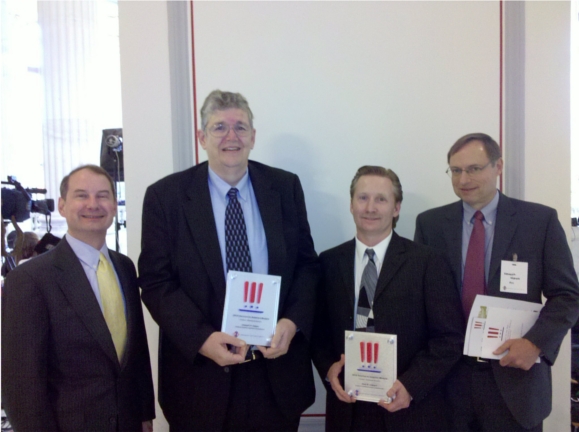
The Service to America Medals, or Sammies, are presented to members of the federal workforce for public service to the Nation and significant contributions which are innovative, high impact or of critical importance to America. I was very pleased to attend a celebration May 5th at the Senate Russell Office Building, where Joe Casey and Paul Coburn, both outstanding members of the FCC’s Public Safety and Homeland Security Bureau, were named as Finalists in the Homeland Security category. Tim Peterson, our Chief of Staff, submitted the nomination, which highlights Joe and Paul’s innovation during and after Hurricane Katrina to start an initiative called Project Roll Call.

As Tim described it, is a system of receivers, spectrum analyzers, antennas, computers, and databases that enables the Commission’s staff to determine which radio-based systems in an area are operational and which are not. This is a powerful tool for the Commission and the federal government to use during a major disaster, attack, or power failure. Project Roll Call enables federal emergency response personnel to maintain real-time situational awareness of radio communications systems immediately after a crisis, thereby enabling federal and private emergency communications personnel to prioritize restoration of the communications systems that will be most critical to emergency rescue, restoration, and relief efforts. Among the communications systems that Project Roll Call can track during a disaster are public safety land mobile radio systems, which first responders rely upon; broadcast systems, which are often the primary manner for government to communicate emergency information to citizens during a disaster; and commercial wireless systems, which citizens in a disaster area rely upon to communicate with family, friends, and neighbors regarding their situation and needs. Before the development of Project Roll Call, the Commission could only determine the operational status of AM broadcasters, and then only at night. Project Roll Call thus represents a huge expansion of our disaster communications capabilities and provides a quick review of the spectrum in order to expedite restoration decisions and efforts.
Joe, Paul and other Project Roll Call team members developed this system using existing, well proven applications of technology. The team members are experienced in using these technologies for law enforcement and interference resolution applications. The unique thing about Project Roll Call's development is that the team recognized the value in combining the various technologies and applying the new combined tool to provide an important homeland security capability.
The FCC has several Project Roll Call units either deployed or ready for immediate deployment. It has been used successfully in restoration efforts following Hurricanes Gustav and Ike, and Tropical Storms Fay and Hanna. Although not designed for international use, Project Roll Call was recently deployed to Haiti to assist communications relief efforts of the Haitian telecommunications regulator, Conatel, and in coordination with USAID. It was also deployed to the State of Washington to be on call for use during the Vancouver Winter Olympics.
The event announcing the Sammies Finalists was inspiring. We heard thirty-two amazing stories of excellence and service concerning the Finalists. Federal employment provides a unique opportunity to make a difference for our Nation. Joe Casey and Paul Coburn have certainly made such a difference, and I am very proud of their contribution. And I appreciate the efforts of Ken Moran, Bill Lane, Jim Pierson and the Public Communications Outreach and Operations Division, as well as the Public Safety and Homeland Security Bureau, past and present, for fostering innovation and new ideas. Finally, I want to thank Tim Peterson for his efforts to recognize true merit, and the FCC’s Managing Director, Steve VanRoekel, for his encouragement.